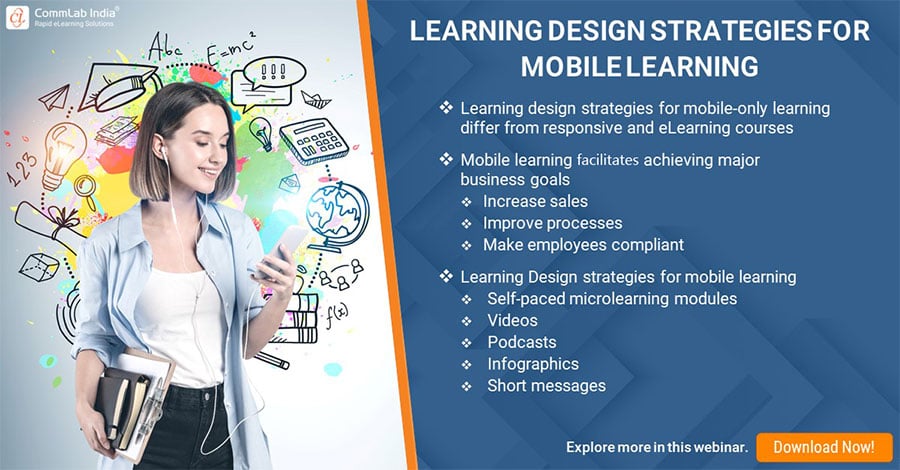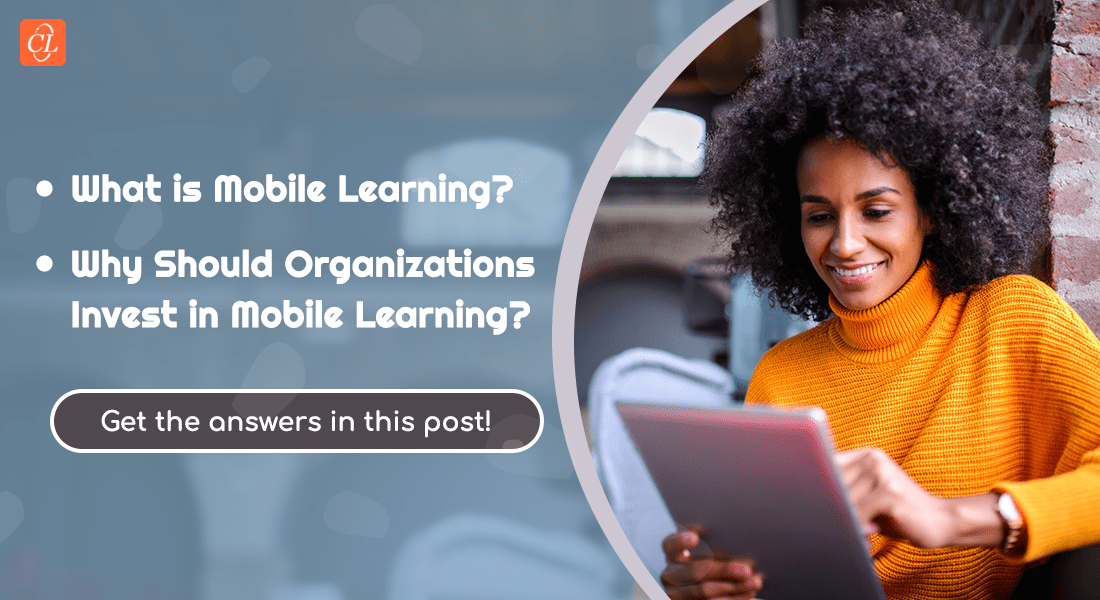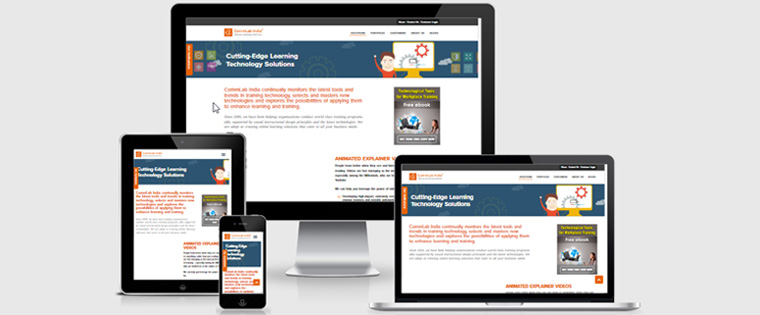Learning Design Strategies for Mobile Learning – An Overview [Infographic]
![Learning Design Strategies for Mobile Learning – An Overview [Infographic] Learning Design Strategies for Mobile Learning – An Overview [Infographic]](https://blog.commlabindia.com/hubfs/blogs/mobile-learning-design-strategies-infographic.jpg)
While the world is becoming increasingly digital, training & development is no exception to the trend. Mobile learning, also known as mLearning, has emerged as a powerful tool that's transforming the way we access training content. With the widespread availability of smartphones and tablets, learning is no longer confined to traditional classrooms. In this blog, explore design strategies for mobile learning and some amazing benefits provided by mobile learning.
What is Mobile Learning?
Mobile learning allows learners to access training resources on their tablets or smartphones. It provides learners with the flexibility to access training anytime and anywhere, breaking down the barriers of physical classrooms.
Here is an infographic on learning design strategies for mobile learning.
Let us also explore some advantages of mobile learning for your learners as well as your organization.
→ Download Now - Mobile Learning: How to Overcome Implementation Barriers
Advantages of Mobile Learning
Flexibility and Convenience
Mobile learning provides unparalleled flexibility by enabling learners to access content anytime, anywhere. Whether you're commuting, waiting in line, or taking a break, you can seamlessly engage with course material. This flexibility empowers learners to integrate training into their daily routines, making learning a continuous process.
Customized Learning
Mobile learning platforms often incorporate advanced analytics and AI algorithms to track user progress and preferences. This data is then utilized to offer personalized learning paths, catering to individual learning styles, speeds, and preferences. This tailored approach enhances engagement, leading to more effective learning outcomes.
Engaging Multimedia Content
Mobile devices facilitate the integration of various multimedia elements such as videos, interactive simulations, and animations. These dynamic and visual components enhance understanding and retention, transforming concepts into experiences that learners can grasp easily.
Microlearning Opportunities
Mobile learning is particularly well-suited for microlearning, where bite-sized modules are delivered to learners. This approach provides quick bursts of knowledge, making learning digestible and immersive.
Cost Effectiveness
Compared to traditional classroom setups, mobile learning eliminates the need for physical infrastructure and reduces logistic costs. Learners can access courses without the burden of commuting expenses, textbooks, and other traditional learning materials.
Continuous Learning
With mobile learning, training becomes a continuous process. Learners can engage in ongoing skill development, staying up to date with the latest advancements in their fields. This constant learning supports career growth and adaptability in a rapidly changing market.
Real-World Application
Mobile learning often encourages the practical application of knowledge. Learners can immediately apply what they've learned in real-life scenarios, reinforcing their understanding, and practicing their new skills.
Bottom Line
Mobile learning has revolutionized the way we access training. Its flexibility, personalized approach, multimedia-rich content, and global accessibility have made it an indispensable tool for all types of learners. As technology continues to advance, it is safe to say that mobile learning will be playing an increasingly vital role in shaping the future of training & development. Have more questions about mobile learning? Grab our eBook and make mobile learning a successful part of your training strategy!







